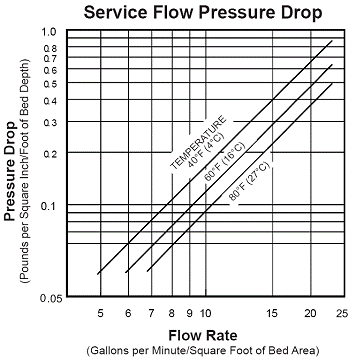Anthracite
Anthracite is a select coal, mined and processed for use in water filtration. It is ideal for single bed, dual bed or multi-media filtration systems.

Because of its angular shape, some of the sediment penetrates deeper into the bed. When compared to equivalent filter sands, this means longer filter runs and less head loss. Backwash rates are also reduced.
| ADVANTAGES |
| Higher service flows and longer filter runs than equivalent sand filters |
| Close attention to gradation, hardness and purity assures consistent and reliable performance |
| Unique density allows Anthracite to be combined with other filtration media in multi-media filters |
| Lower uniformity coefficient has less oversized and undersized particles resulting in a highly uniform bed |
| PHYSICAL PROPERTIES |
| Color: Black |
| Bulk Density: 50 lbs./cu.ft. |
| Hardness: 3.0-3.8 (Mohs scale) |
| Effective Size: #1 Anthracite: 0.6-0.8 mm #1 ½″ Anthracite: 0.85-0.95 mm #2 Anthracite: 1.7-2.0 mm |
| Uniformity Coefficient: #1 Anthracite: >1.7 |
| Water Soluble Ash: less than 0.5% |
| Iodine #: 850 min., 900 typical |
| Abrasion #: 75 min., 81 typical. |
| Moisture as packed: 2% max., 0.7% typical |
| Meets American Water Works Association standard B604-96 |
| CONDITIONS FOR OPERATION |
| Water to be filtered should preferably be free of oil and suspended matter |
| The water to be filtered should be relatively free of iron and turbidity for maximum service life |
| Water pH range: wide range |
| Bed depth: 26-30 in. |
| Freeboard: 50% of bed depth (min.) |
| Backwash flow rate: 10-12 gpm/sq.ft. |
| Backwash bed expansion: 30-40% of bed depth |
| Upon installation, backwash to remove carbon fines before placing unit into service |
© Copyright 2025 RAYNED
